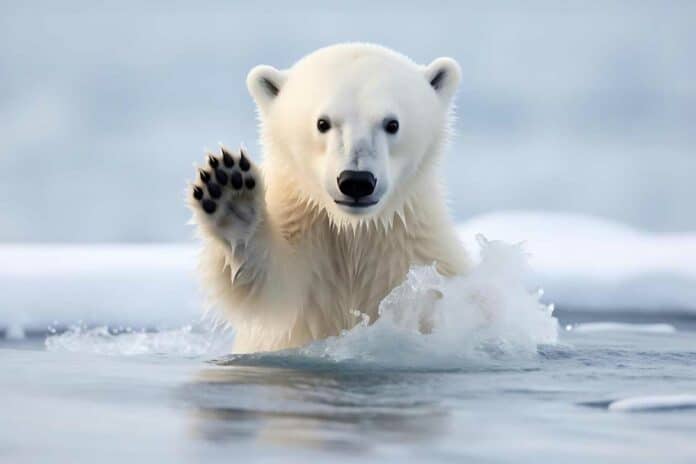In the Arctic, the sea ice is shrinking fast, which is changing how things work in the ecosystem. Polar bears, like kings of the Arctic, rely on this ice to hunt seals, their primary food. They mostly hunt seals during late spring and early summer when the seals have their babies.
Because of climate change, some parts of the Arctic are now ice-free for longer. This means polar bears in those areas must go to land instead of staying on the ice. Polar bears try to conserve energy when they’re on land by not moving around too much.
Little has been known about polar bear energy expenditure and behavior when confined to land. In a new study, scientists used collars with video cameras and GPS to track polar bears summering in the western Hudson Bay region of Manitoba, Canada. They wanted to see what the specialized ice hunters ate and did during the extended time on land when their preferred seal prey was out of reach.
The scientists also checked how much the bears weighed before and after the study and measured how much energy they used up.
Lead author Anthony Pagano, a research wildlife biologist with the U.S. Geological Survey Polar Bear Research Program and former WSU post-doctoral researcher, said, “We found a real diversity of bear behaviors, and as a result, we saw a diverse range of energy expenditures.”
Several adult male polar bears chose to conserve energy by mostly lying down, burning calories at rates comparable to when they hibernate. On the other hand, some polar bears actively hunted for food, feeding on bird and caribou remains, as well as berries, kelp, and grass.
The researchers observed a significant difference in energy expenditure among the bears. The least active adult male rested for about 98% of the time, while the most active covered a distance of 330 kilometers (205 miles). Some adult females spent up to 40% of their time searching for food. However, despite their efforts, the activity did not yield a significant payoff.
Pagano said, “The terrestrial foods did give them some energetic benefit, but ultimately, the bears had to spend more energy to access those resources.”
In a study focused on polar bears at the southern end of their range in western Hudson Bay, researchers observed some bears swimming long distances for food. One bear swam an impressive 175 kilometers (about 110 miles) across the bay. However, despite their efforts, two bears found carcasses in the water—a beluga and a seal—but couldn’t feed on them while swimming or bring them back to land.
Out of the 20 bears studied, only one managed to gain weight after coming across a dead marine mammal on land. This highlights the challenges polar bears face in finding enough food, especially as the ice-free period in the Arctic continues to lengthen due to climate warming. The polar bear population in the area has already decreased by about 30% since 1987, suggesting that starvation is becoming an increasing risk for polar bears across the Arctic.
Pagano said, “As polar bears are forced on land earlier, it cuts into the period that they normally acquire the majority of the energy they need to survive. With increased land use, the expectation is that we’ll likely see increases in starvation, particularly with adolescents and females with cubs.”
Journal Reference:
- Pagano, A.M., Rode, K.D., Lunn, N.J. et al. Polar bear energetic and behavioral strategies on land with implications for surviving the ice-free period. Nat Commun 15, 947 (2024). DOI: 10.1038/s41467-023-44682-1
